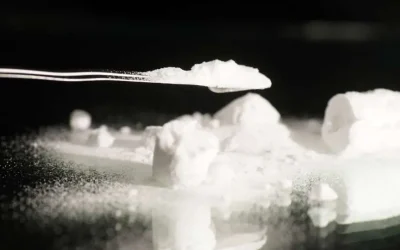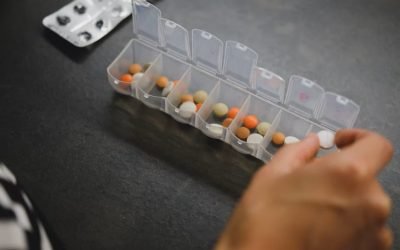Last updated: October, 2025
Substance abuse refers to the repeated or excessive use of alcohol or other drugs, even when it starts as experimentation. While not everyone who uses substances develops an addiction, even occasional use can cause serious harm to both body and mind.
Understanding what substance abuse is and how it develops helps prevent long-term consequences. Whether the substance is alcohol, cannabis, prescription medication, or another drug, the risks increase when use becomes a coping mechanism for stress, sadness, or anxiety.
What Is Substance Abuse?
Substance abuse occurs when someone continues to use drugs or alcohol despite the problems it creates. These issues may appear at work, at school, or in relationships. The person might also face legal or financial difficulties but still feels unable to stop.
Unlike addiction, which involves physical or psychological dependence, substance abuse often begins as a behavioral pattern. However, the line between the two is thin. Continued abuse often leads to dependence when tolerance and withdrawal symptoms appear.
In both cases, experts refer to a substance use disorder, a condition that affects the brain’s reward and motivation systems, making self-control harder over time.
From Experimentation to Addiction
Most people start using substances experimentally for curiosity, social acceptance, or temporary relief from stress. Over time, what begins as casual use can evolve into regular use. The brain associates the substance with comfort or escape, reinforcing the cycle.
When the substance becomes a central part of daily life, and the person continues using despite negative consequences, we speak of substance abuse. Eventually, the body and mind adapt to constant exposure, and the person may develop a dependency: a state where they need more of the substance to feel “normal” or to avoid withdrawal symptoms.
How Common Is Substance Abuse?
Alcohol remains the most widely used substance worldwide, followed by cannabis and cocaine. These three account for the majority of substance-related disorders in Europe.
While anyone can develop a substance problem, certain groups are at higher risk, including:
- Teenagers who begin using at a young age
- People living in poverty or unstable environments
- Those surrounded by others who engage in risky or addictive behaviors
- Individuals with untreated mental health issues
- People with a family history of addiction or psychiatric illness
In many of these cases, substance abuse is linked to underlying problems such as trauma, anxiety, or depression, which need to be addressed alongside the addiction itself.
Recognising the Warning Signs
Substance abuse can be difficult to spot, especially when users try to hide their behavior. However, several emotional, physical, and social indicators often reveal a problem:
- Frequent accidents or risky behaviors related to intoxication
- Sudden changes in mood or motivation
- Neglecting responsibilities at work, school, or home
- Seeking help for anxiety, sleep problems, or depression
- Withdrawal from friends or family
- Secretive behavior or lying about use
- Legal or financial difficulties
Sometimes, people seek help for mental health symptoms such as anxiety or sadness, without realizing that substance use is contributing to the problem. Recognizing this connection is a crucial step toward recovery.
How Substance Use Disorder Is Diagnosed
Professionals diagnose a substance use disorder (SUD) using the DSM-5 criteria, a classification system that defines mental health conditions based on scientific evidence.
The DSM-5 lists 11 possible indicators, including:
- Using more frequently or in larger amounts than intended.
- Repeated unsuccessful attempts to cut down or quit.
- Spending excessive time obtaining, using, or recovering from the substance.
- Strong cravings or urges to use.
- Neglecting responsibilities at work, school, or home.
- Continuing to use despite relationship problems.
- Giving up hobbies or social activities.
- Using in physically dangerous situations.
- Continuing use despite health issues caused or worsened by it.
- Developing tolerance and needing more for the same effect.
- Experiencing withdrawal symptoms when not using.
The severity of the disorder depends on how many criteria apply:
- 2–3: Mild
- 4–5: Moderate
- 6 or more: Severe
In all cases, the disorder must cause significant distress or impairment in daily functioning to be formally diagnosed.

When to Seek Help
If you or someone you know shows several of the signs above, it’s time to seek professional support. Waiting for the problem to “go away” on its own can make recovery more difficult. Early intervention not only prevents health complications but also increases the likelihood of successful treatment.
Seek help immediately if:
- You feel unable to stop despite wanting to
- Your mental or physical health is deteriorating
- Substance use is affecting relationships or work
- You experience depression, anxiety, or suicidal thoughts
What Can You Do Yourself?
Approach the situation calmly and without judgment. If you’re speaking to someone about their substance use, use empathy rather than confrontation. Substance questions are often perceived as accusations, so listening without criticism helps build trust.
For young people and families, family therapy or joint sessions can be highly effective. Support from loved ones plays a vital role in long-term recovery.
What Professionals Can Do
Doctors and therapists evaluate both the physical and psychological effects of substance use. Treatment typically focuses on therapy rather than medication, as many individuals already rely on substances to manage anxiety or sleep issues.
At Hacienda Paradiso, treatment begins with understanding the root cause of substance use. Our integrated programs may include:
- Individual and group therapy
- Dual diagnosis support (for co-occurring mental health conditions)
- Mindfulness and holistic therapies
- Medical detox when necessary
- Aftercare and relapse prevention planning
Because every person’s situation is different, the therapeutic approach is tailored to their emotional, social, and physical needs. The goal is not just to stop substance use but to restore balance, confidence, and well-being.
Taking the Next Step
Recognising substance abuse is the first and most powerful step toward recovery. Whether your goal is to regain control, rebuild relationships, or simply find peace of mind, professional guidance can make all the difference.
At Hacienda Paradiso, our team combines evidence-based therapy with holistic care in a private, natural setting designed to promote genuine healing. From detox and therapy to long-term aftercare, we’ll guide you through every stage of your recovery with compassion and expertise.
If you or someone you care about is struggling with substance abuse, reach out today for a confidential consultation. The path to balance, freedom, and renewal can begin right now.
FAQ — Substance Abuse and Recovery
Substance abuse refers to harmful or risky use without full dependence. Addiction involves physical or psychological dependence and withdrawal symptoms.
If you continue to use despite problems in your health, relationships, or work, and you find it difficult to stop, you may meet the criteria for substance use disorder.
Seek help if substance use is causing distress, mood changes, or disruptions in your daily life. The earlier treatment starts, the better the results.
We offer evidence-based therapy, holistic approaches, and aftercare plans in a serene natural environment focused on long-term recovery.
Education, emotional support, and early intervention are key. Building healthy coping mechanisms and open family communication greatly reduce risk.









